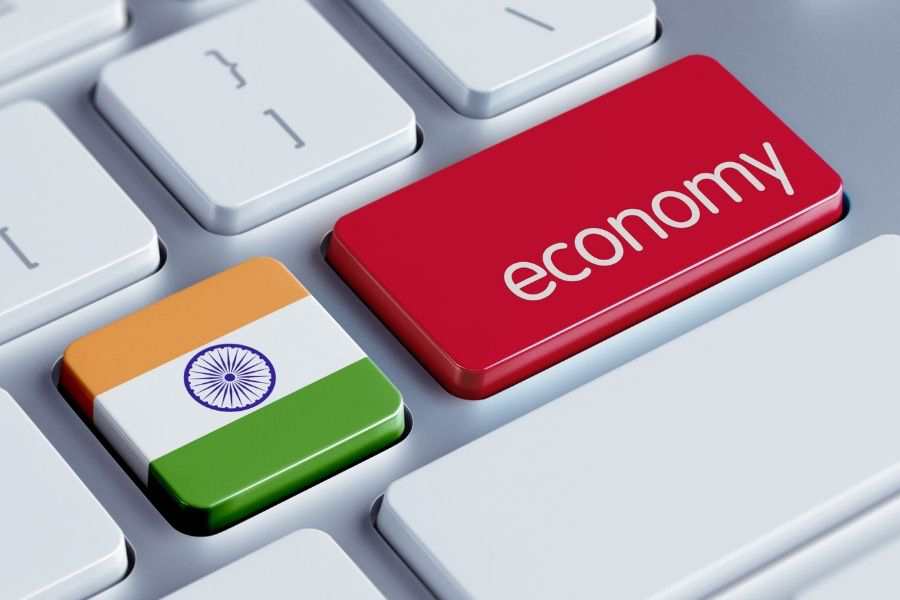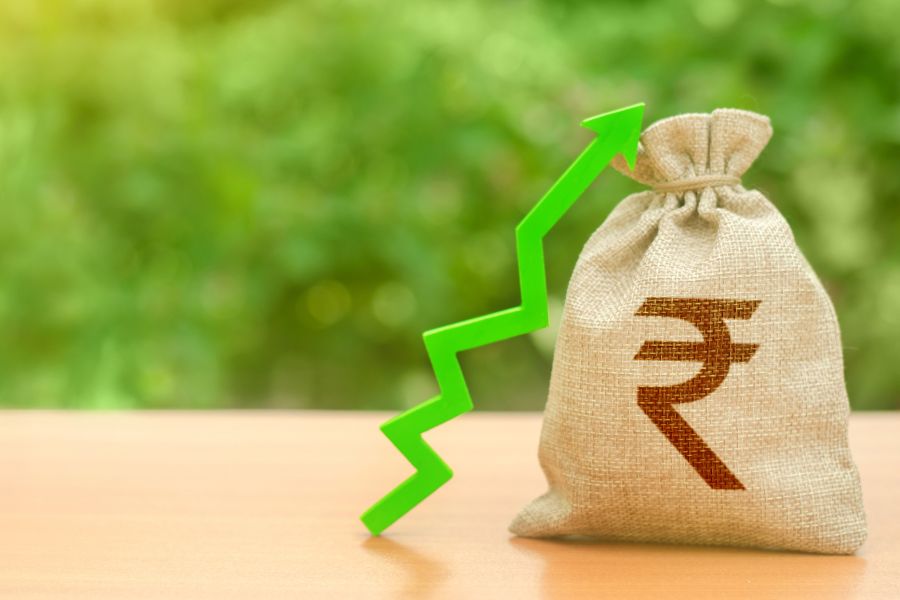PLI Scheme: Addressing the missing links
The Government of India introduced PLI to boost investments, output and exports. With an actual investment of Rs 53,500 crore so far, there has been an increase in output of over Rs 5 lakh crore and employment generation of over 3 lakh. But the scheme’s impact has been relatively imbalanced with large scale electronics cornering over 50% of the disbursals. How should the government move forward to ensure that PLI drives the Aatmanirbhar Bharat vision the way it was intended to be?

Image by Alethea Flowers from Pixabay
What is PLI and what is its aim?
Production-Linked Incentive (PLI) Scheme is a fiscal subsidy introduced in March 2020 to push the ‘Aatmanirbhar Bharat’ project with the goal of making domestic manufacturing “globally competitive” and “global champions”. The subsidy is offered on:
(i) Additional investments
(ii) Incremental sales and
(iii) Value addition
The scheme has been specifically designed to boost domestic manufacturing in sunrise and strategic sectors, restrict cheaper imports and reduce import bills. PLI scheme also aims to improve the cost competitiveness of domestically manufactured goods and generate employment for the youth.
With a total incentive outlay of Rs 1.97 lakh crore (about US$ 26 billion), the scheme currently covers 14 sectors. The first PLI scheme was announced in March 2020 for three sectors, followed by the addition of another ten sectors in November 2020. In September 2021, the PLI scheme was extended to the drone and drone components sector.
The 14 sectors are mentioned below (as per their departments and launched year):
| Sectors covered under PLI Scheme |
March 2020
|
November 2020:
|
September 2021
|
Current Status of PLI
The government has approved 717 applications till December 2022, with an expected investment of Rs 2.74 lakh crore. According to data released by the government, actual investment of Rs 53,500 crore has been realised, which has resulted in an increase in production/sales of over Rs 5 lakh crore and employment generation of over 3 lakhs.
PLI for electronics has attracted investments of over Rs 5,100 crore and led to a total production of Rs 2.4 lakh crore while generating employment for 52,000 people. The pharmaceutical sector is reported to have attracted investment of Rs 19,000 crore. Food processing saw an investment inflow of Rs. 6,000 crore and telecom witnessed Rs 1,600 crore worth of investment.
| PLI OUTLAY | |||
| Apr’21 & Sep’22 | Sept’21 | Sept’21 | Apr’20 |
| Rs. 24,000 Cr Solar PV Modules | Rs.25,938 Cr Auto & Auto Comp | Rs. 120 Cr Drones | Rs. 38,645 Cr Large Scale Electronics |
| July’21 | July’20 | March’21 | Feb’21 |
| Rs. 6,322 Cr Specialty Steel | Rs. 3,420 Cr Medical Devices | Rs. 15,000 Cr Pharmaceuticals | Rs. 12,195 Cr Telecom |
| Apr’21 | Apr’21 | July’20 | June’21 |
| Rs. 6,238 Cr White Goods | Rs. 10,900 Cr Food Processing | Rs. 6,940 Cr Bulk Drugs | Rs. 18,100 Cr ACC Battery |
Figures in Rs crores
It is reported that a total PLI claim of Rs 3,420.05 crore was registered by the participating companies from eight sectors (large-scale electronics manufacturing; electronics and technology products; bulk drugs; medical devices; pharmaceuticals; telecom and networking products; food items; and drones).
Till March 2023, the government has released Rs 2,874.71 crore to beneficiaries of the PLI scheme. A majority of the beneficiary companies were from the sectors like electronics, telecom, pharma and food processing. Large scale electronics manufacturing was at the top of the list of disbursals, with Rs 1,649 crore, followed by pharma (Rs 652 crore), food products (Rs 486 crore), telecom (Rs 35 crore), drones (Rs 30 crore), medical devices (Rs 12.8 crores), electronics (Rs 5.3 crore) and bulk drugs (Rs 4.34 crore).
PLI claims vs disbursals across sectors
| Sectors | Actual PLI Claims | PLI Disbursed |
| Large Scale Electronics Manufacturing – (MeitY) | 1,651.45 | 1,649 |
| Electronic/ Technology Products – (Meity) | 70.60 | 5 |
| Bulk Drugs-(D/o Pharma) | 5.43 | 4.34 |
| Manufacturing of Medical Devices – (D/o Pharma) | 16 | 12.8 |
| Pharmaceuticals Drugs – (D/o Pharma) | 898.62 | 652 |
| Telecom & Networking Products – (D/o Telecom) | 36 | 35 |
| Food Products – (MOFPI) | 700 | 486 |
| Drones and Drone Components – (M/o Civil Aviation) | 41 | 30 |
| TOTAL | 3,420.05 | 2,874.71 |
Figures in Rs crore
According to Abhishek Jain, Partner, Indirect Tax, KPMG India (a tax, audit and advisory firm), the PLI scheme conjoined with other investment-driven incentives such as Bonded Manufacturing scheme and FTP (Foreign Trade Policy) linked incentives offered by the central government, and other state incentives have helped in increasing the share of the manufacturing sector in India’s GDP (Gross Domestic Product).
The government is considering adding more sectors to the ambit of the PLI scheme, to be made eligible for PLI benefits. These include the toys and furniture sector. For toys, the government plans to commit Rs 3,500 crore, while for furniture the incentive outlay is yet to be announced. Besides expecting consideration of the renewable energy sector in the PLI scheme, the industry seeks an extension of PLI to wind turbine makers and component manufacturing for the development of new megawatt-size turbines (3 to 5 MW). It is widely expected by the industry that PLI should also support research and development.
On the other side
Promotion of the manufacturing sector and creation of a conducive manufacturing ecosystem, are very essential for an Aatmanirbhar Bharat. As India is advancing with a vision of being a US$ 5 trillion economy, the manufacturing sector has to play a catalytic role with double-digit growth rate on a sustained basis. Manufacturing companies need to become an integral part of global supply chains, acquire core competence and cutting-edge technology.
Though there is a consensus that the introduction of the PLI scheme has had a positive impact, industry and experts believe that by extending the duration of the scheme, its efficacy will increase manifold.
However, the disbursal of the PLI amount has not been balanced, with over half of the amount going to large scale electronics manufacturing. Pharmaceuticals and food products have received most of the remaining disbursed amount. However, six sectors, including textiles, white goods, automobiles, auto parts, solar PV modules, and ACC battery, are yet to receive any disbursals.
“In some sectors, investments and spending have not been as much as anticipated, as manufacturers may be finding it difficult to meet some of the PLI conditions that were finalised when the global situation was different and Europe was not in crisis. But no scheme has been derailed. Going by the way things are changing (globally) and the response we are getting, in 2023-24 we are hopeful that all sectors will be back on track,” said Rajeev Singh Thakur, Additional Secretary, DPIIT.
The scheme offers incentives based on incremental sales to beneficiaries. It is relatively easier for the big players to get incentives. On the other hand, slow disbursal in some sectors indicates that these sectors are taking more time to enter the production stage. In addition to this, greenfield projects naturally take longer than brownfield projects.
Experts are unanimous that to really catalyse India’s manufacturing ecosystem, it will be necessary to continuously monitor the scheme for its effectiveness in both attracting applications and achieving desired results in investments and output. An instance of this was the IT hardware PLI scheme that received lukewarm response, attracting only Rs 123 crore of investments compared to Rs 2,500 crore expected by the centre. The scheme was subsequently discontinued and a new one is currently being framed.
Moreover, the role of MSMEs cannot be ignored. In a sector like mobile phones, deep manufacturing capabilities will be tough to acquire if India is unable to build a strong component ecosystem, as it happened in the case of electronics. For that, some version of the PLI scheme for the benefit of MSMEs will certainly be beneficial.













Tertiary Butyl Carbazate manufacturers in india